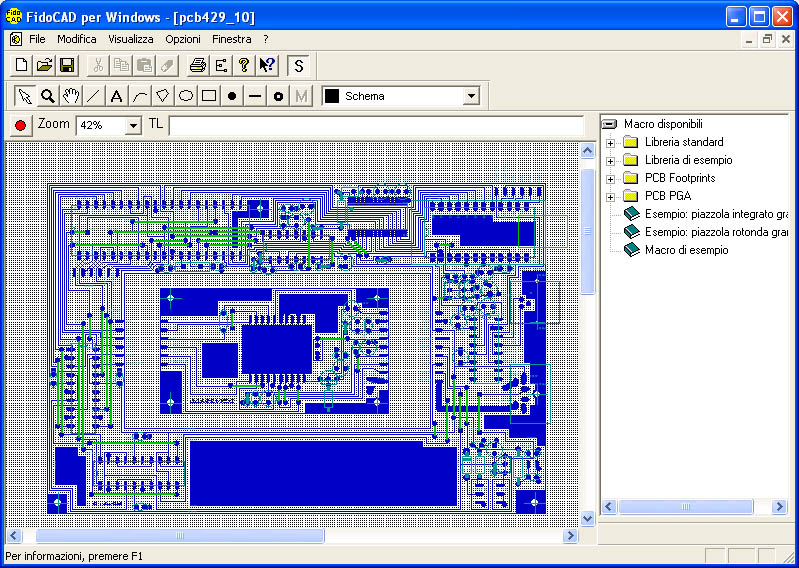You need a suitable software like Designer to open an SCH file. Without proper software you will receive a Windows message 'How do you want to open this file?' (Windows 10) or 'Windows cannot open this file' (Windows 7) or a similar Mac/iPhone/Android alert. If you cannot open your SCH file correctly, try to right-click or long-press the file. Method 1 Using the USB Cable Attach the cable to your PC. Plug the free end of the cable into your Android. Allow your computer to access your Android.
A bug report contains device logs, stack traces, and other diagnosticinformation to help you find and fix bugs in your app. You can capture a bugreport from your device by using either the Take bug report developeroption on the device, the Android Emulator menu,or the adb bugreport command on your development machine.
To take a bug report, you must haveDeveloper options enabled on yourdevice so you can access the Take bug report option.
Capture a bug report from a device
Figure 2. The bug report is ready

To get a bug report directly from your device, do the following:
- Be sure you have DeveloperOptions enabled.
- In Developer options, tap Take bug report.
- Select the type of bug report you want and tap Report.
After a moment you get a notification that the bug report is ready (see figure 2).
- To share the bug report, tap the notification.
Capture a bug report from the Android Emulator
From the Android Emulator, you can use the File a bugfeature in the extended controls:
- Click More in theemulator panel.
In the Extended controls window, select Bug report on the left.
This opens a screen where you can see the bug report details such as the screenshot, the AVD configuration info, and the bug report log. You can also type a message with reproduction steps to save with the report.
Wait for the bug report to finish collecting, and then click Save Report.
Capture a bug report using adb
If you have just one device connected, you can get a bugreport usingadb as follows:
If you do not specify a path for the bugreport, it is saved tothe local directory.
If you have multiple devices connected, you must specify the device with the-s option. Run the following adb commands toget the device serial number and generate the bug report.
Inspect the bug report ZIP file
By default the ZIP file is calledbugreport-BUILD_ID-DATE.zip and itit may contain multiple files, but the most important file isbugreport-BUILD_ID-DATE.txt. Thisis the bug report and it containsdiagnostic output for system services (dumpsys), error logs (dumpstate),and system message logs (logcat). The system messages include stack traceswhen the device throws an error, and messages written from all apps with theLog class.
The ZIP file contains a version.txt metadata file that containsthe Android release letter, and when systrace is enabled, the ZIP file alsocontains a systrace.txt file. TheSystrace toolhelps analyze the performanceof your application by capturing and displaying execution times of yourapplication processes and other Android system processes.
The dumpstate tool copies files from the device's filesysteminto the ZIP file under the FS folder so you can reference them. For example,a /dirA/dirB/fileC file in the device would generate anFS/dirA/dirB/fileC entry in the ZIP file.
Figure 3. Bug report file structure
For more information, seeReading bug reports.
Get reports from your users
Capturing bug reports as described above is helpful as you're using the appyourself, but your end-users can't easily share these types of bug reportswith you. To get crash reports with stack traces from real-world users,you should take advantage of Google Play's and Firebase's crash reportingfeatures.
Google Play Console
You can get reports from theGoogle Play Console to view data for crashes and application notresponding (ANR) errors from users who installed your app from Google Play.Data is available for the previous six months.
:max_bytes(150000):strip_icc()/004_free-pcb-design-software-packages-818956-fc6c0cd96a204826a846126e2876d290.jpg)
For more information, seeView crashes & application not responding (ANR) errors in Play Console help.
Firebase crash reporting
Firebase Crashlytics reporting creates detailed reports of the errors in your app.Errors are grouped into issues based on having similar stack traces, and triagedby the severity of impact on your users. In addition to automatic reports, youcan log custom events to help capture the steps leading to a crash.
You'll start receiving crash reports from any user by simply adding theFirebase dependenciesto your build.gradle file. For more information, seeFirebase Crashlytics.
- 1.Origin Project
- 2.OrCAD Project File
File Type 1Origin Project
| Developer | OriginLab |
| Popularity | |
| Category | Data Files |
| Format | N/A |
What is an OPJ file?
An OPJ file is a project created by Origin, a data analysis and graphing application used by various scientists and engineers. It contains all of the project contents, which includes data, 2D/3D graphs, and settings.
The OPJ file is the most common file type associated with Origin since it is used as a container for projects. You can open OPJ files with Origin and you can also open OPJ files with Origin Viewer, a free, lightweight program that allows you to view and copy information in OPJ projects.
To open an OPJ file in Origin, select File → Open..., select the '.opj' file type, navigate to the OPJ file location, and click .
To save an OPJ file in Origin, select File → Save project or Save Project As..., name the file, choose the save location, and click .
NOTE: The release of Origin 2018 included an updated unicode format for saving projects (.OPJU), which features performance advantages over the older, non-unicode OPJ file format.

Programs that open OPJ files
Pcb File Format

To get a bug report directly from your device, do the following:
- Be sure you have DeveloperOptions enabled.
- In Developer options, tap Take bug report.
- Select the type of bug report you want and tap Report.
After a moment you get a notification that the bug report is ready (see figure 2).
- To share the bug report, tap the notification.
Capture a bug report from the Android Emulator
From the Android Emulator, you can use the File a bugfeature in the extended controls:
- Click More in theemulator panel.
In the Extended controls window, select Bug report on the left.
This opens a screen where you can see the bug report details such as the screenshot, the AVD configuration info, and the bug report log. You can also type a message with reproduction steps to save with the report.
Wait for the bug report to finish collecting, and then click Save Report.
Capture a bug report using adb
If you have just one device connected, you can get a bugreport usingadb as follows:
If you do not specify a path for the bugreport, it is saved tothe local directory.
If you have multiple devices connected, you must specify the device with the-s option. Run the following adb commands toget the device serial number and generate the bug report.
Inspect the bug report ZIP file
By default the ZIP file is calledbugreport-BUILD_ID-DATE.zip and itit may contain multiple files, but the most important file isbugreport-BUILD_ID-DATE.txt. Thisis the bug report and it containsdiagnostic output for system services (dumpsys), error logs (dumpstate),and system message logs (logcat). The system messages include stack traceswhen the device throws an error, and messages written from all apps with theLog class.
The ZIP file contains a version.txt metadata file that containsthe Android release letter, and when systrace is enabled, the ZIP file alsocontains a systrace.txt file. TheSystrace toolhelps analyze the performanceof your application by capturing and displaying execution times of yourapplication processes and other Android system processes.
The dumpstate tool copies files from the device's filesysteminto the ZIP file under the FS folder so you can reference them. For example,a /dirA/dirB/fileC file in the device would generate anFS/dirA/dirB/fileC entry in the ZIP file.
Figure 3. Bug report file structure
For more information, seeReading bug reports.
Get reports from your users
Capturing bug reports as described above is helpful as you're using the appyourself, but your end-users can't easily share these types of bug reportswith you. To get crash reports with stack traces from real-world users,you should take advantage of Google Play's and Firebase's crash reportingfeatures.
Google Play Console
You can get reports from theGoogle Play Console to view data for crashes and application notresponding (ANR) errors from users who installed your app from Google Play.Data is available for the previous six months.
For more information, seeView crashes & application not responding (ANR) errors in Play Console help.
Firebase crash reporting
Firebase Crashlytics reporting creates detailed reports of the errors in your app.Errors are grouped into issues based on having similar stack traces, and triagedby the severity of impact on your users. In addition to automatic reports, youcan log custom events to help capture the steps leading to a crash.
You'll start receiving crash reports from any user by simply adding theFirebase dependenciesto your build.gradle file. For more information, seeFirebase Crashlytics.
- 1.Origin Project
- 2.OrCAD Project File
File Type 1Origin Project
| Developer | OriginLab |
| Popularity | |
| Category | Data Files |
| Format | N/A |
What is an OPJ file?
An OPJ file is a project created by Origin, a data analysis and graphing application used by various scientists and engineers. It contains all of the project contents, which includes data, 2D/3D graphs, and settings.
The OPJ file is the most common file type associated with Origin since it is used as a container for projects. You can open OPJ files with Origin and you can also open OPJ files with Origin Viewer, a free, lightweight program that allows you to view and copy information in OPJ projects.
To open an OPJ file in Origin, select File → Open..., select the '.opj' file type, navigate to the OPJ file location, and click .
To save an OPJ file in Origin, select File → Save project or Save Project As..., name the file, choose the save location, and click .
NOTE: The release of Origin 2018 included an updated unicode format for saving projects (.OPJU), which features performance advantages over the older, non-unicode OPJ file format.
Programs that open OPJ files
Pcb File Format
File Type 2OrCAD Project File
| Developer | Cadence Design Systems |
| Popularity | |
| Category | CAD Files |
| Format | Text |
.OPJ File Association 2
CAD project file created by OrCAD, a program used for designing electric circuits, known as PCBs (printed circuit boards); saves references to files included in the project as well as project settings; usually references at least a .DSN design file; used for storing PCB design information together.
OPJ files are saved in a plain text format, but should only be modified using the OrCAD user interface instead of a text editor.
